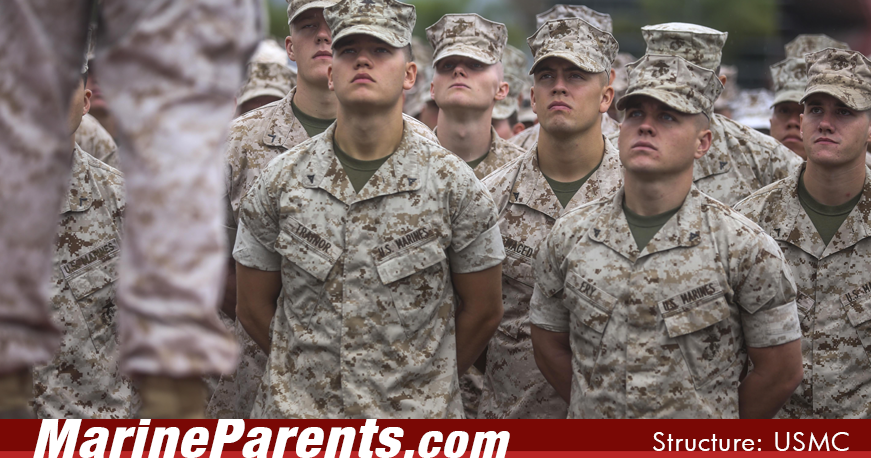Structure of the Marine Corps
MarineParents.com presents helpful information about the structure of the Marine Corps.

Image info: The 37th Commandant of the Marine Corps, General Robert Neller, speaks to Marines of the First Marine Expeditionary Force during his visit to Camp Pendleton, California, Oct. 5, 2015.
—Photo by Sergeant James Gulliver.
USMC: The Organization
The USMC is organized with two parallel chains of command, service and operational. The Service chain begins with the President, through the Secretary of Defense, and continues through the Secretary of the Navy and the Commandant of the Marine Corps. The operational chain runs from the President, through the Secretary of Defense, directly to commanders of combatant commands for missions and forces assigned to their commands. The Marine Corps operating forces consists of the Marine Corps Forces (MARFOR), Marine Corps security forces at naval installations, and Marine security guard detachments at embassies at consulates around the world.
Marine Corps History
The history of the Marine Corps is extensive and detailed. The Marine Corps was officially formed on November 10, 1775 at Tun Tavern in Philadelphia, PA. After the Treaty of Paris ended the Revolutionary War in 1783 the Marines disbanded. The Marine Corps was re-established on July 11, 1798 and conducted operations against pirates along the "Shores of Tripoli." Ever since Marines have taken part in wars from the War of 1812, Civil War, World War I, World War II, Vietnam, and the wars in Iraq and Afghanistan.
Marine Air-Ground Task Force (MAGTF)
Marine formations deploy as integrated Marine Air-Ground Task Forces (MAGTFs) of various sizes: Marine Expeditionary Unit (MEU) commanded by a colonel, Marine Expeditionary Brigade (MEB) commanded by a brigadier or major general, and Marine Expeditionary Force (MEF) commanded by a lieutenant general. Each has a Command Element (CE), a Ground Combat Element (GCE), an Aviation Combat Element (ACE), and Combat Service Support Element (CSSE). The major organizational limitation of the CE of a MAGTF smaller than a MEF is that it may not be a permanent entity. The GCE is a task organization tailored for the conduct of ground operations. It is constructed around an infantry unit, varying in size from a rifle platoon to a reinforced Marine division or divisions, and includes its organic combat support and combat service support units. The ACE normally includes those aviation command (including air control agencies), combat, combat support, and combat service support units required for conduct of the mission. The CSSE is task-organized to provide those functions not within the organic capability of the other elements of the MAGTF. The CSSE does not provide redundant capabilities, but is designed to support the continued readiness and sustainability of the MAGTF as a whole.

